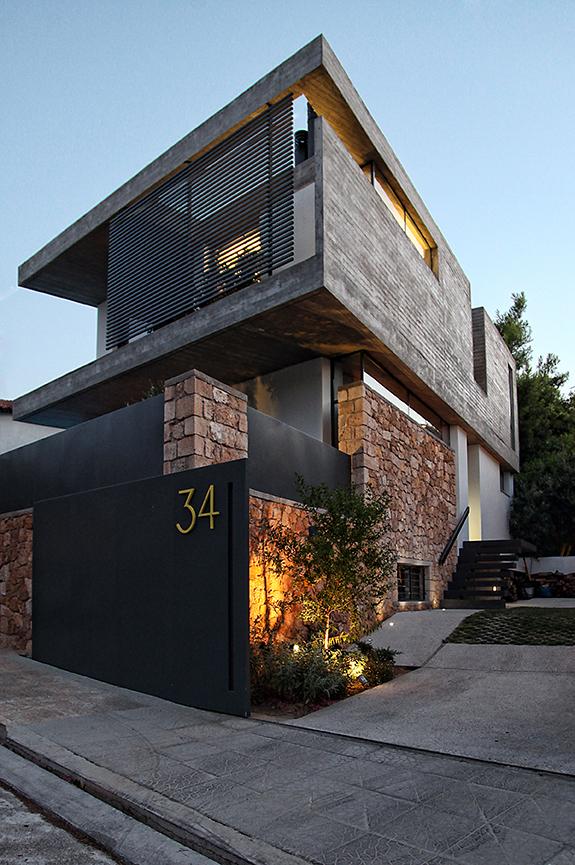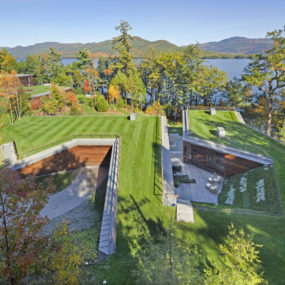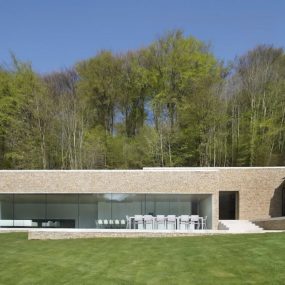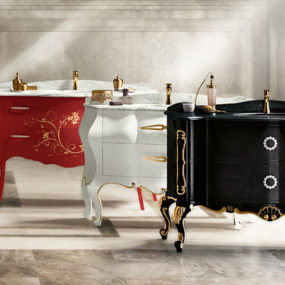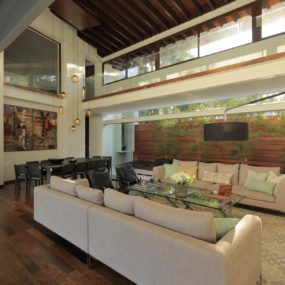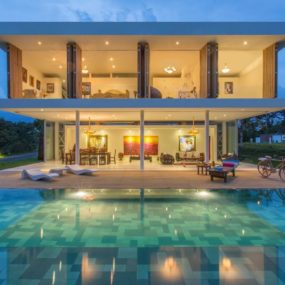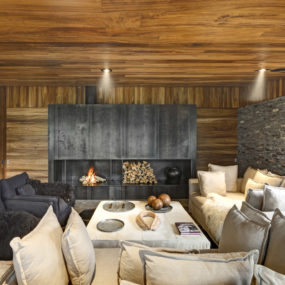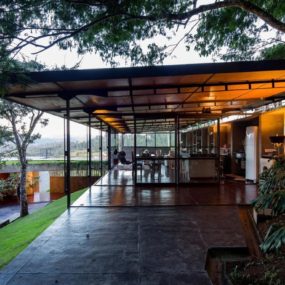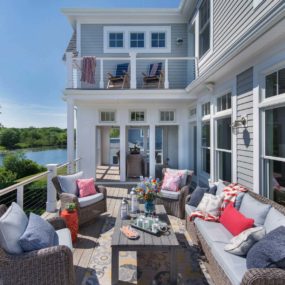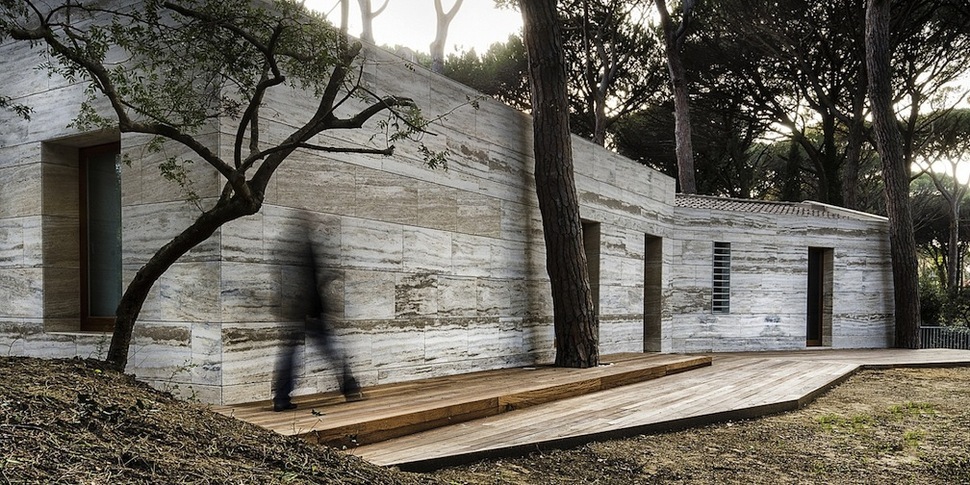
Located in the small city of Pistoia in the middle of Italy, this compelling compact home is a collaborative project between Sundaymorning and Massimo Fiorido Associati, two regional architecture firms. Originally built in the 1960s, the formerly unremarkable cottage was in dire need of renovations when its owners commanded a complete reinvention. Its single-most defining exterior feature is the limestone variety used as cover for its walls, known as travertine. For added visual effect and to ease the transportation of materials, the single slab of travertine limestone used to clothe the house is cut into a number of smooth rectangular pieces, patterned to look like a cross between bricks and floor tiling. This interesting design choice is further enhanced by the large wooden patio areas on both sides of the house, as well as by large wood-lined window openings. Inside, wood hues take over from the stone, creating warm and inviting living, dining, and sleeping rooms. A few creative touches, like a staircase turned storage and an enclosed kitchen at the front entrance, liven up the serene spaces inside.
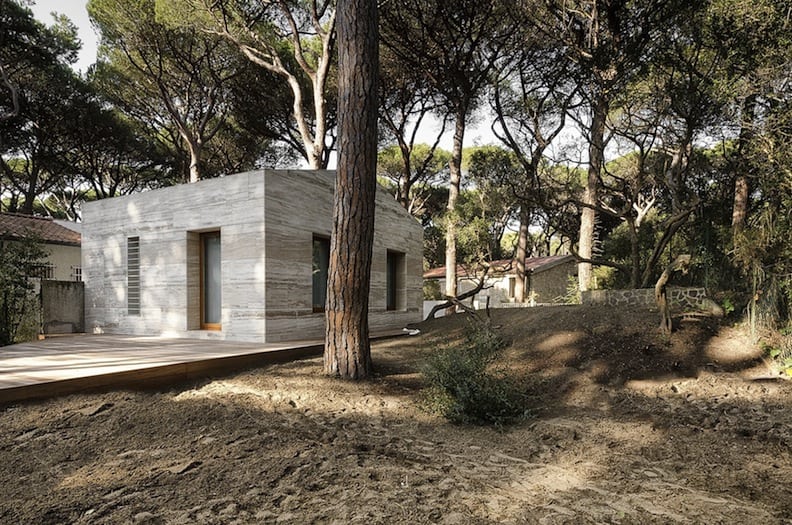
The travertine variety of limestone used on to cover this Italian residence is reflective of the tones of sand, dirt, and brush surrounding it.
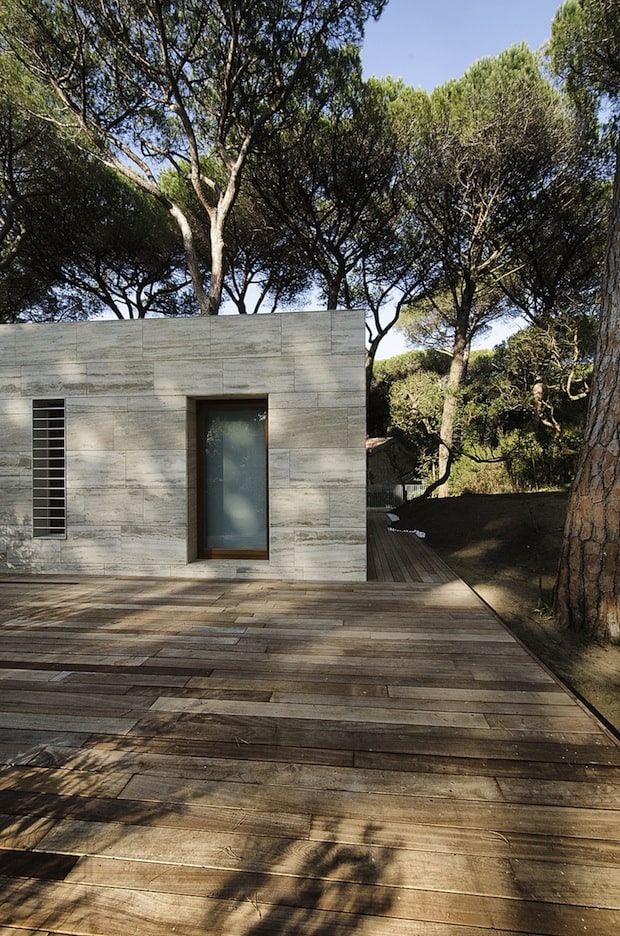
Much of the property is covered with wood decking leading to and from the house and providing social space outside.
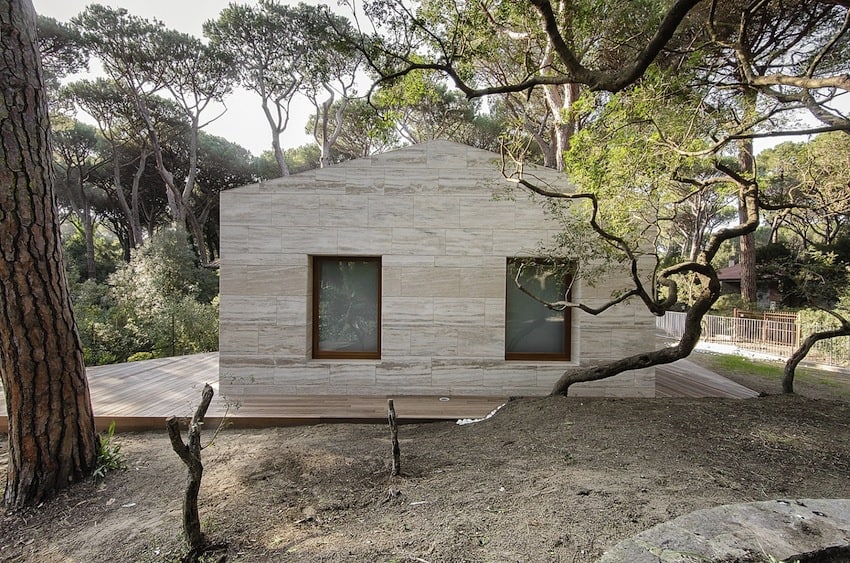
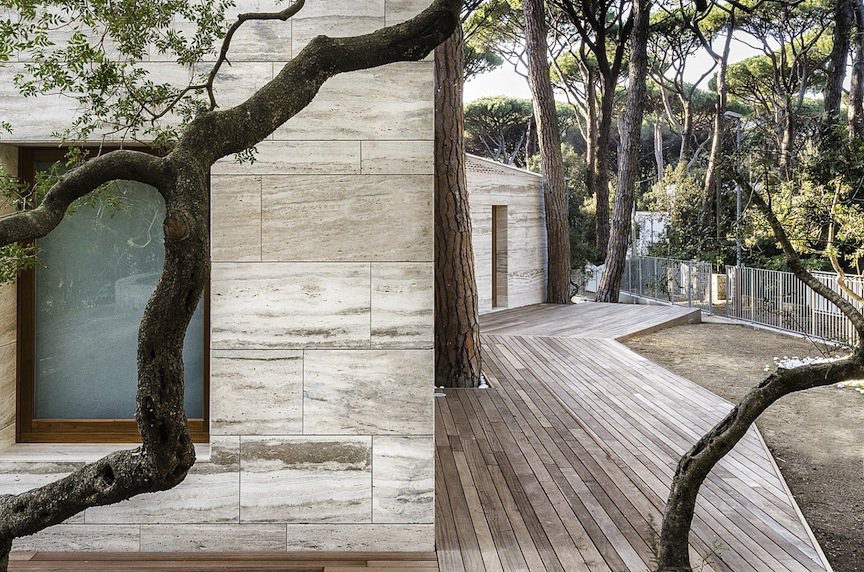
Trees that date back to before the construction or renovation of the house are integrated deftly into the environment, poking up from cut-outs in the deck and skirting inches away from the structure.
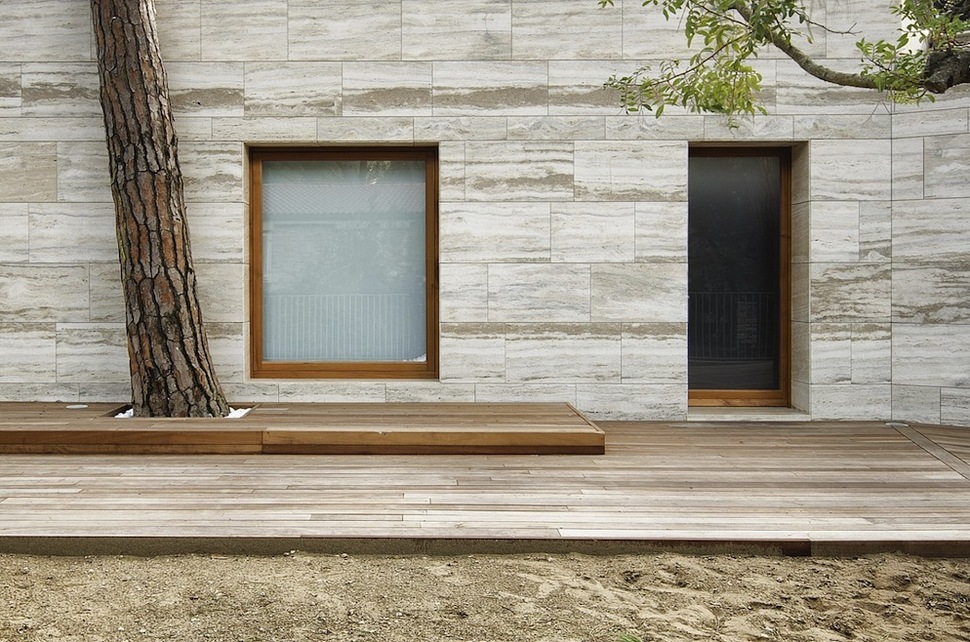
Each large window and door of the home is made from a sheet of clear glass, set inside striking, almost orange wooden frames.
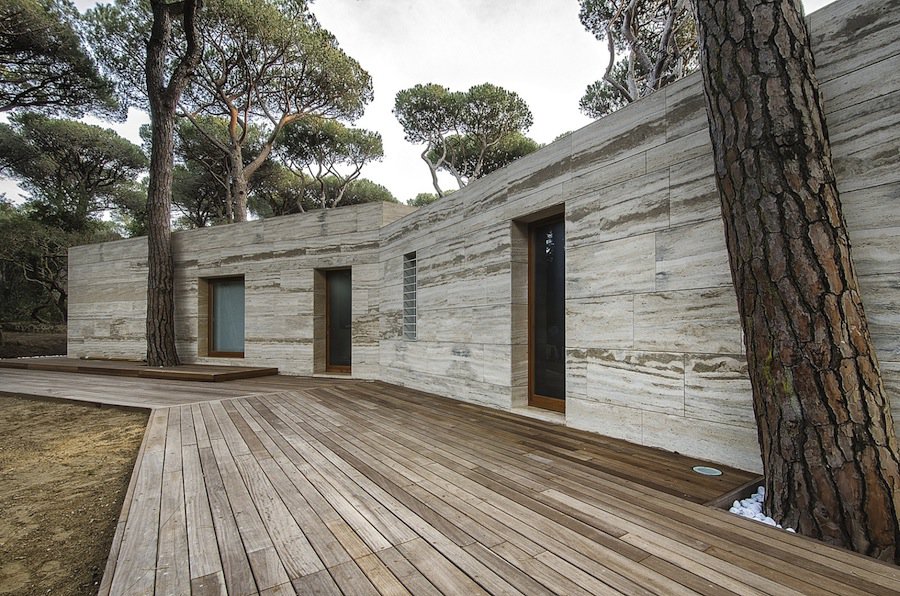
The large wooden ground-level deck is similar in hue (but not in pattern) to the residence’s limestone walls, extending the reach of the small abode beyond its basic footprint.
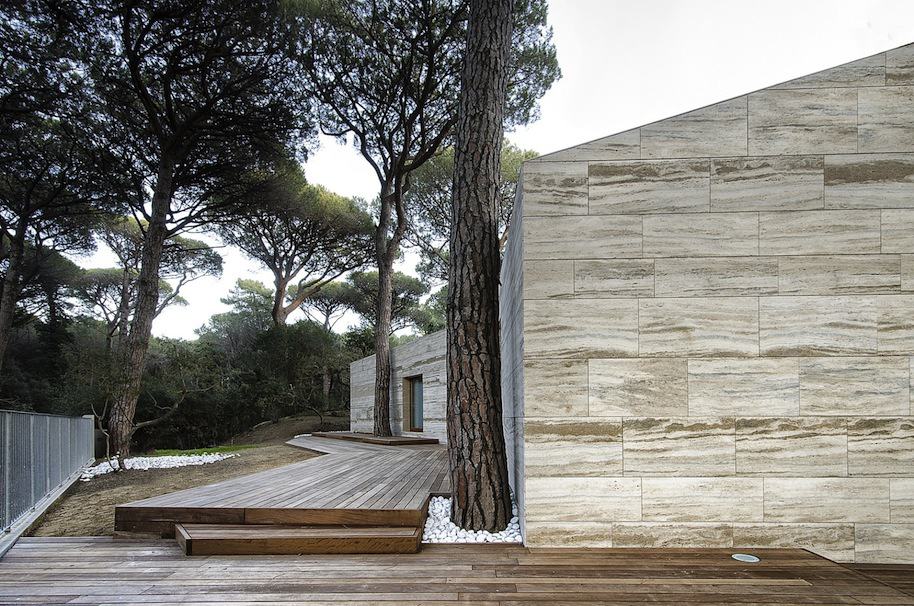
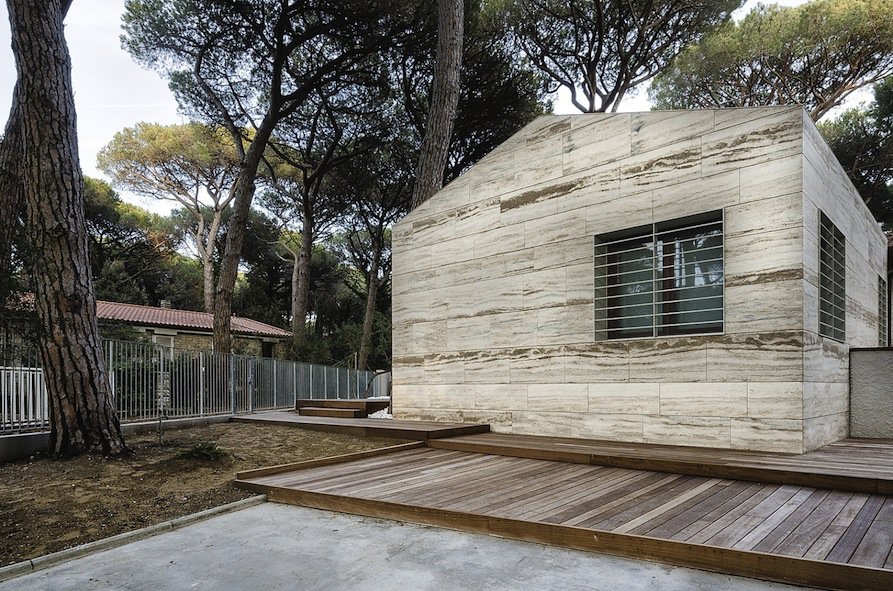
The most private edge of the home as smaller and fewer windows than the other end, and those smaller windows have thin slats to break up the view inward.
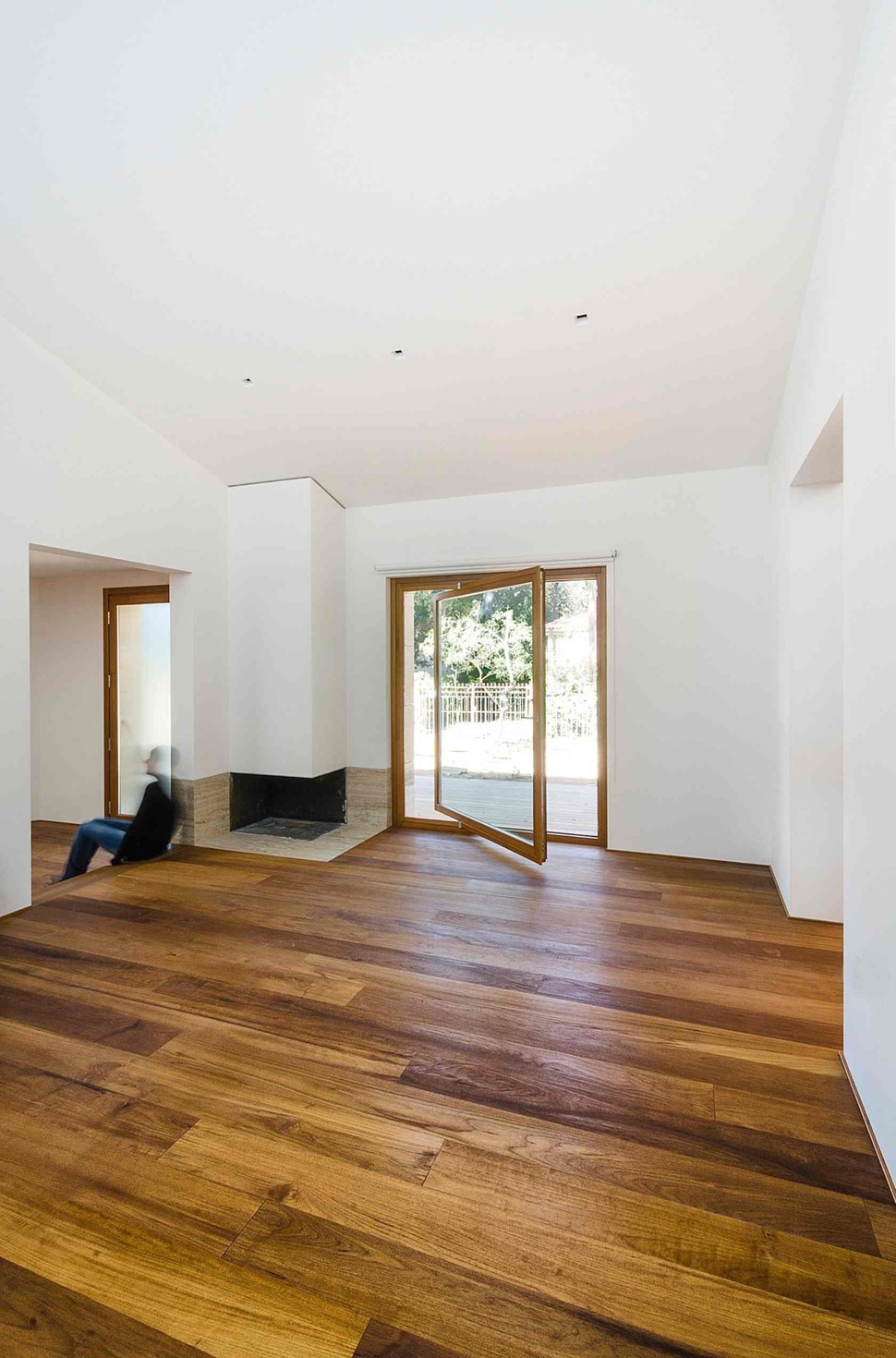
The large windows pivot from the middle to let air in, creating an opening large enough to serve as a doorway, even though an actual door to the house is usually nearby.

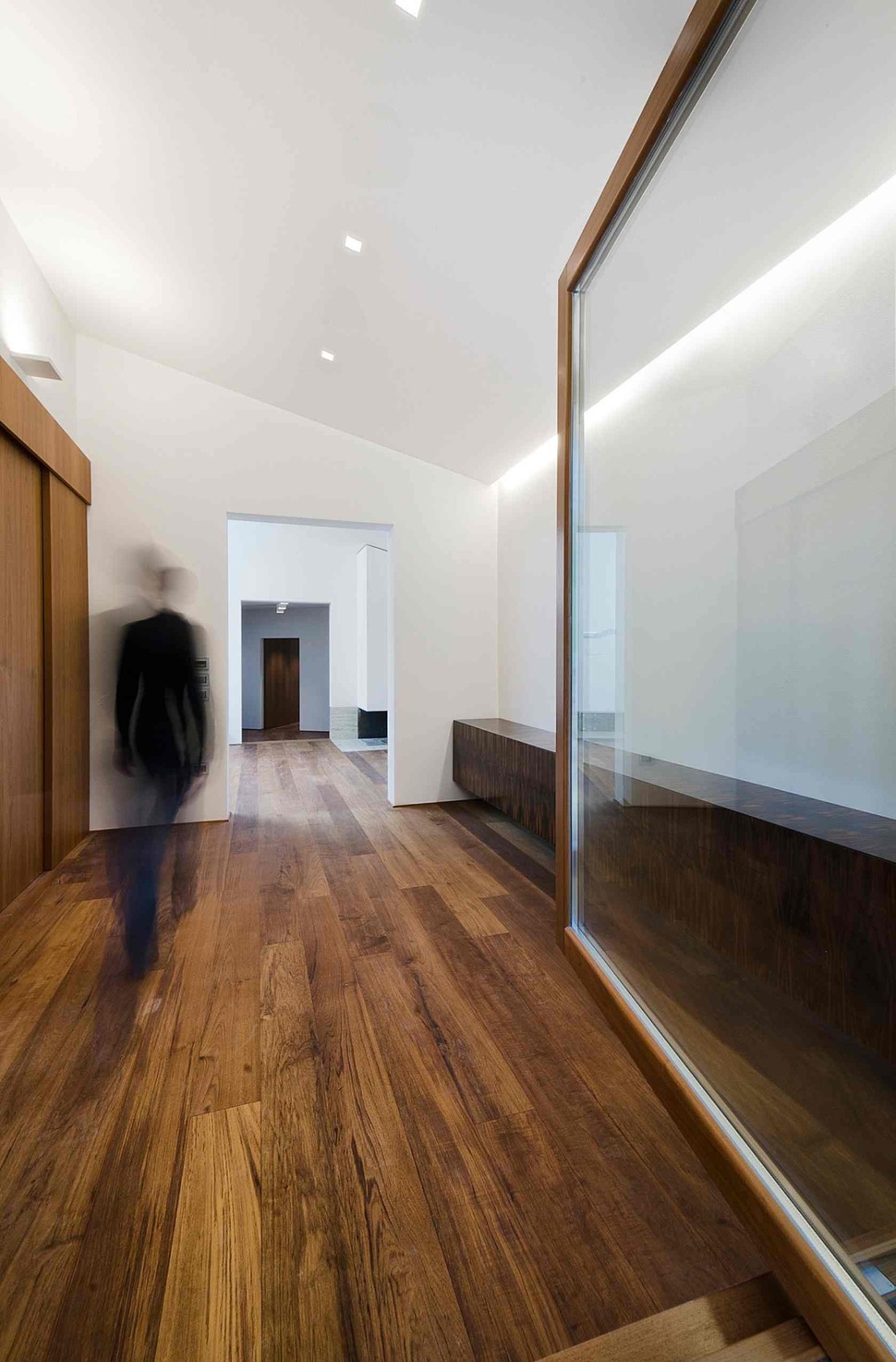
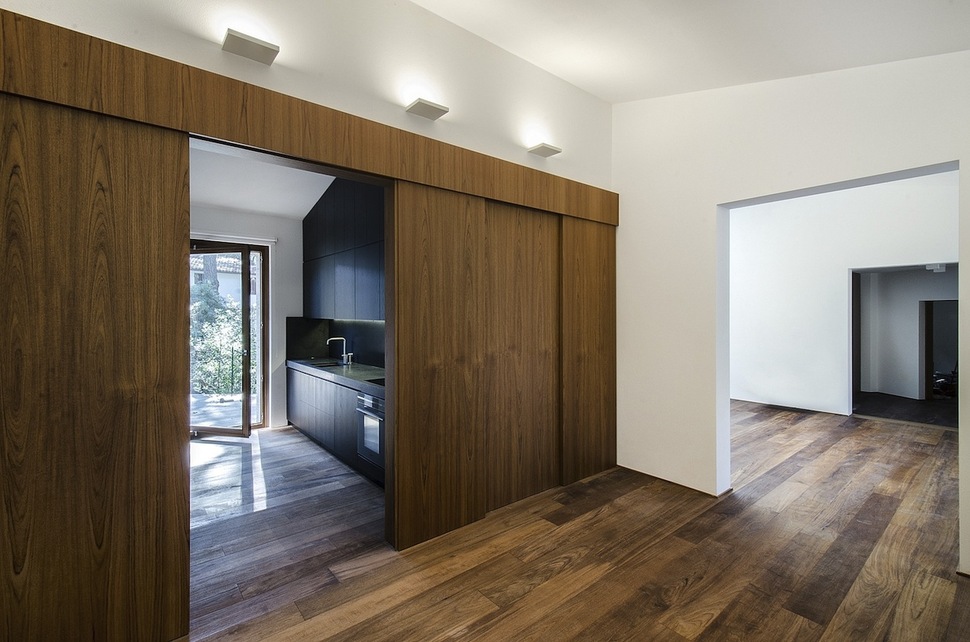
The front door of the compact house actually leads directly into the kitchen, with an area to one side for coats and shoes to be placed.


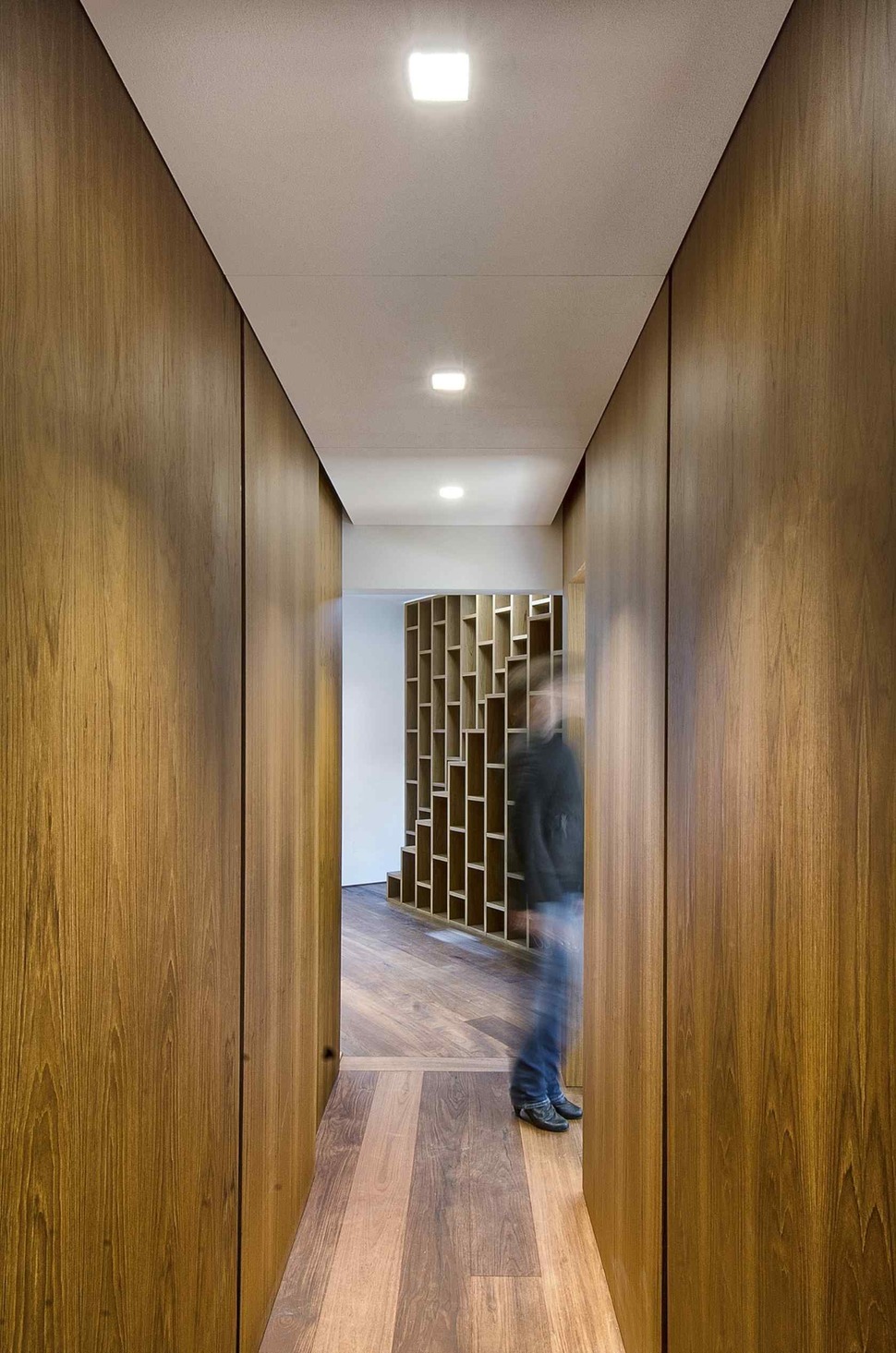
The dwelling has an interior ceiling slope, contrasting the flat roof seen outside and creating a frame for well-placed ceiling lighting.
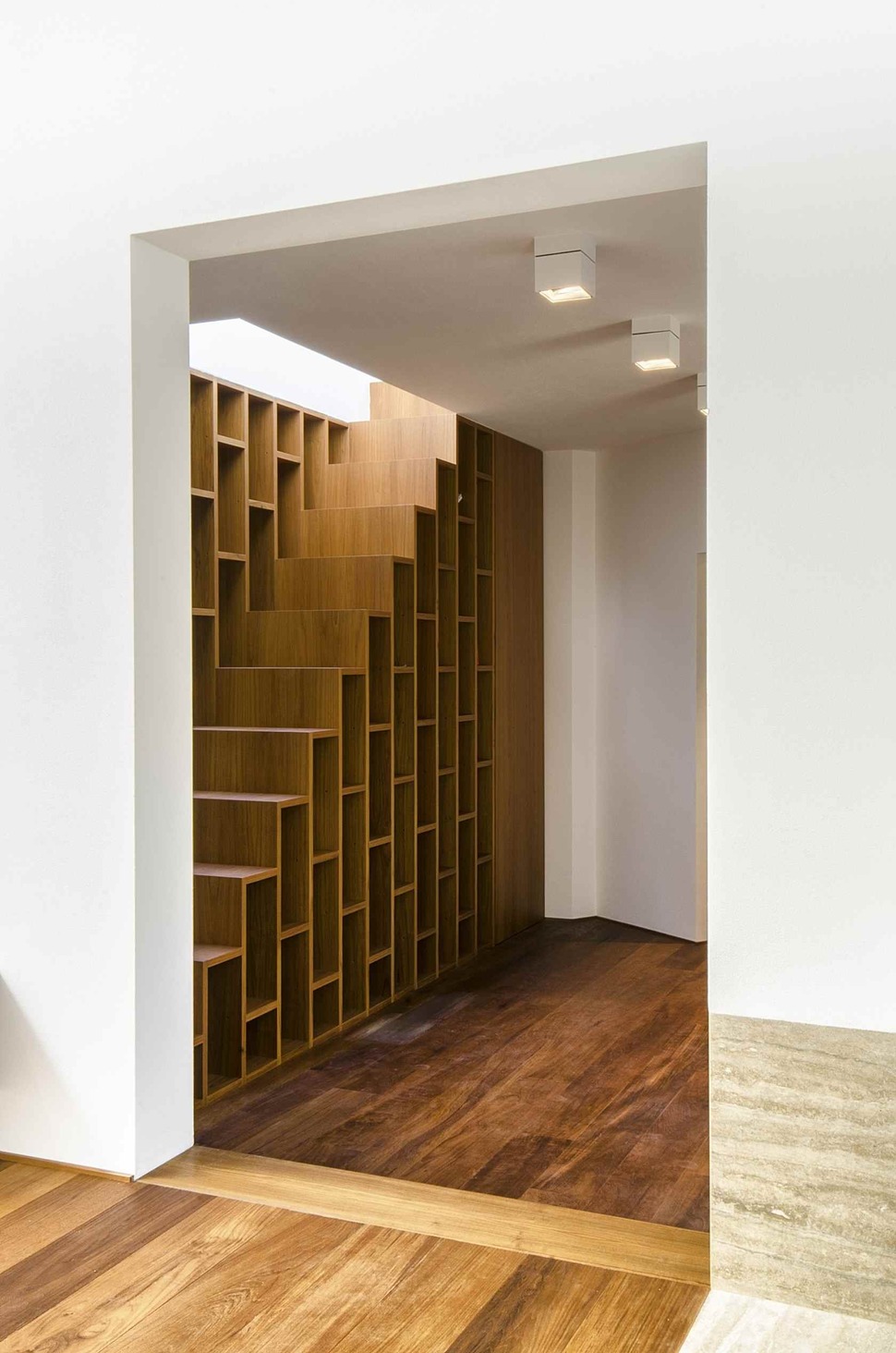
One half of the home has a long, wood-paneled hallway, leading to private rooms.
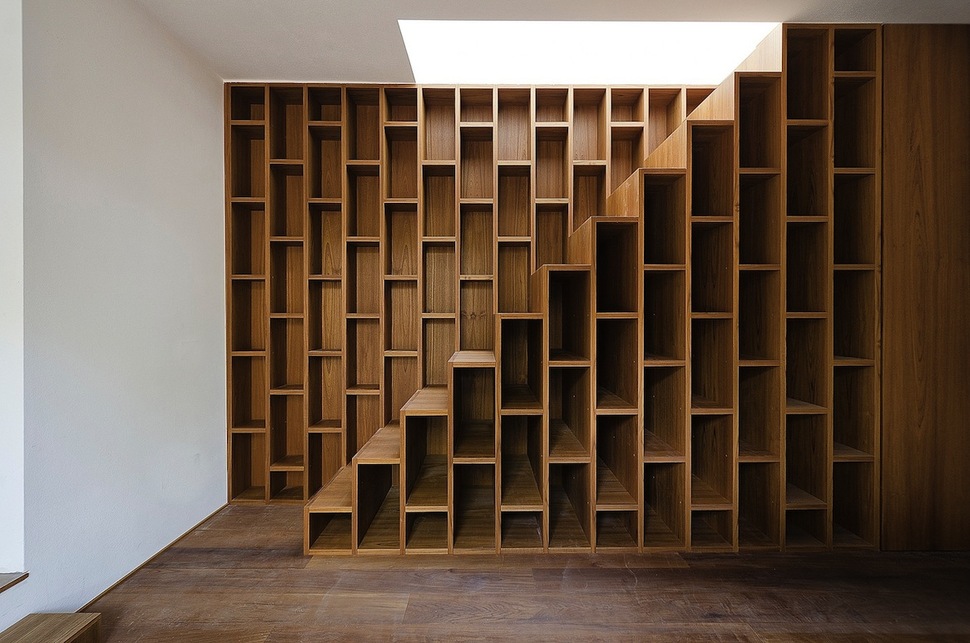
Along the edge wall of one side of the house is this combination of staircase and storage, leading up to a wide and bright skylight.
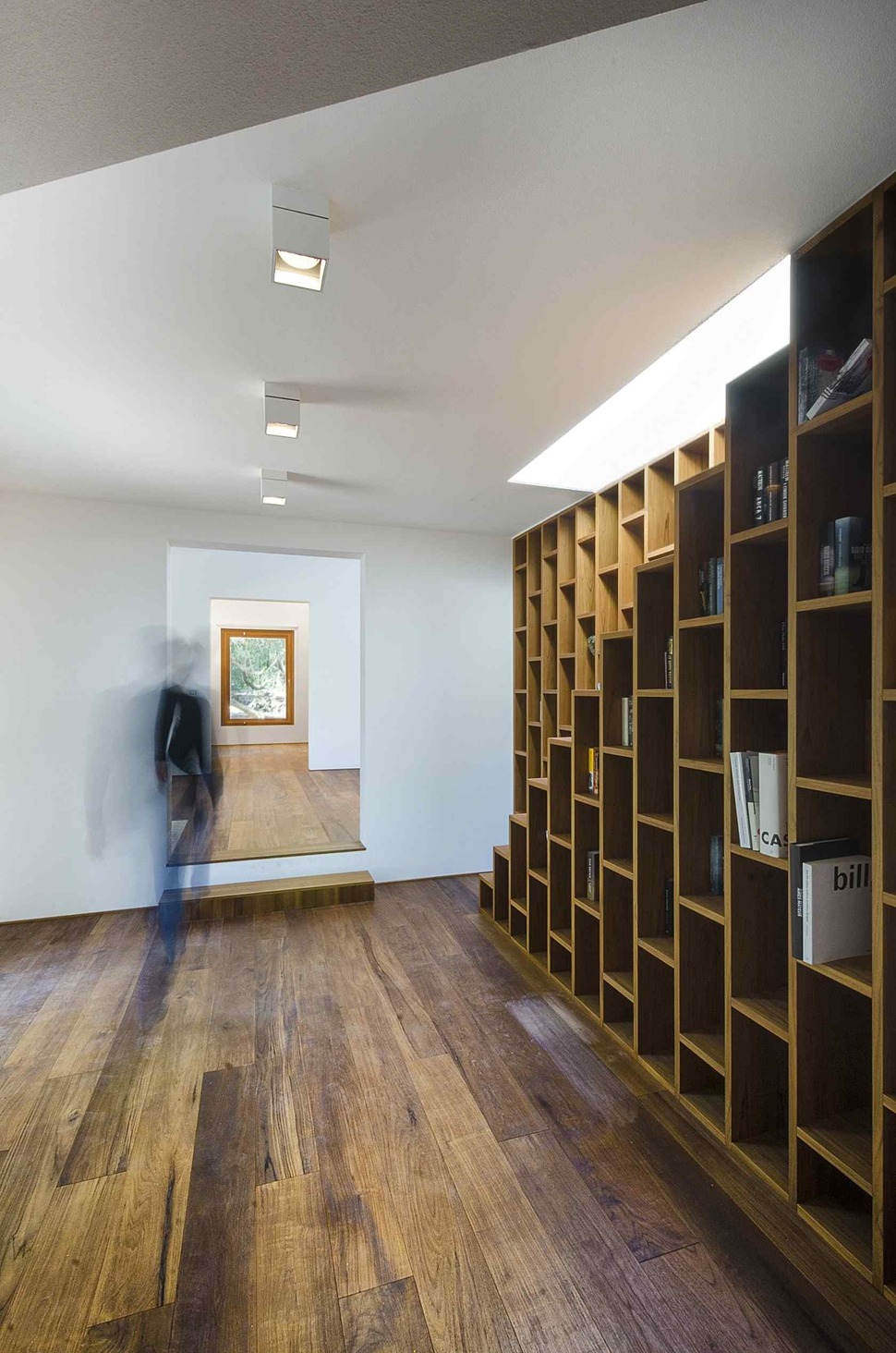
The staircase is actually principally used as visually appealing shelving complex, given that it doesn’t actually lead to any room of the house.
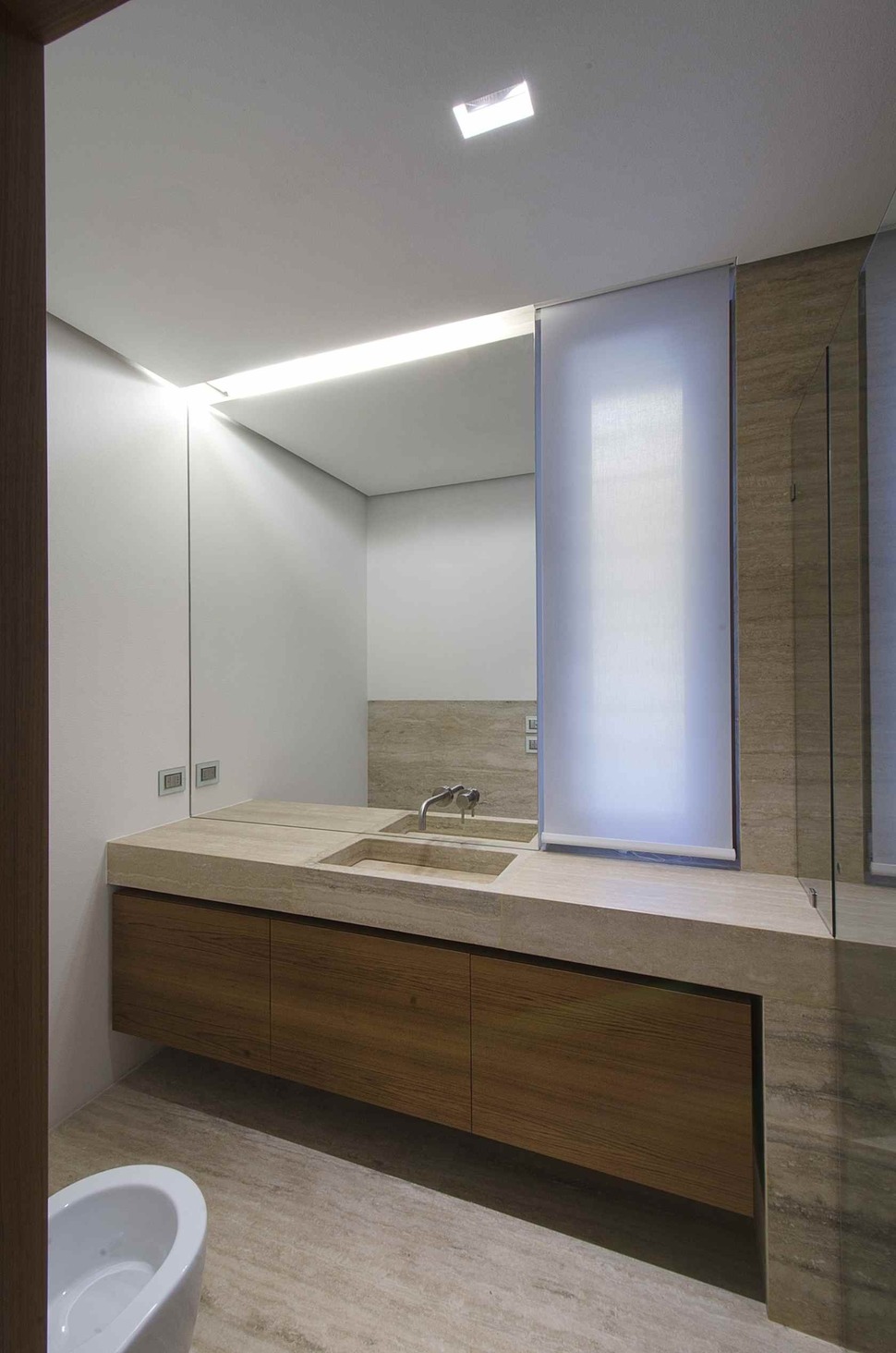
Each bathroom in the home re-integrates the travertine limestone from the outside; the stone fits in easily here as an obvious material for countertops.
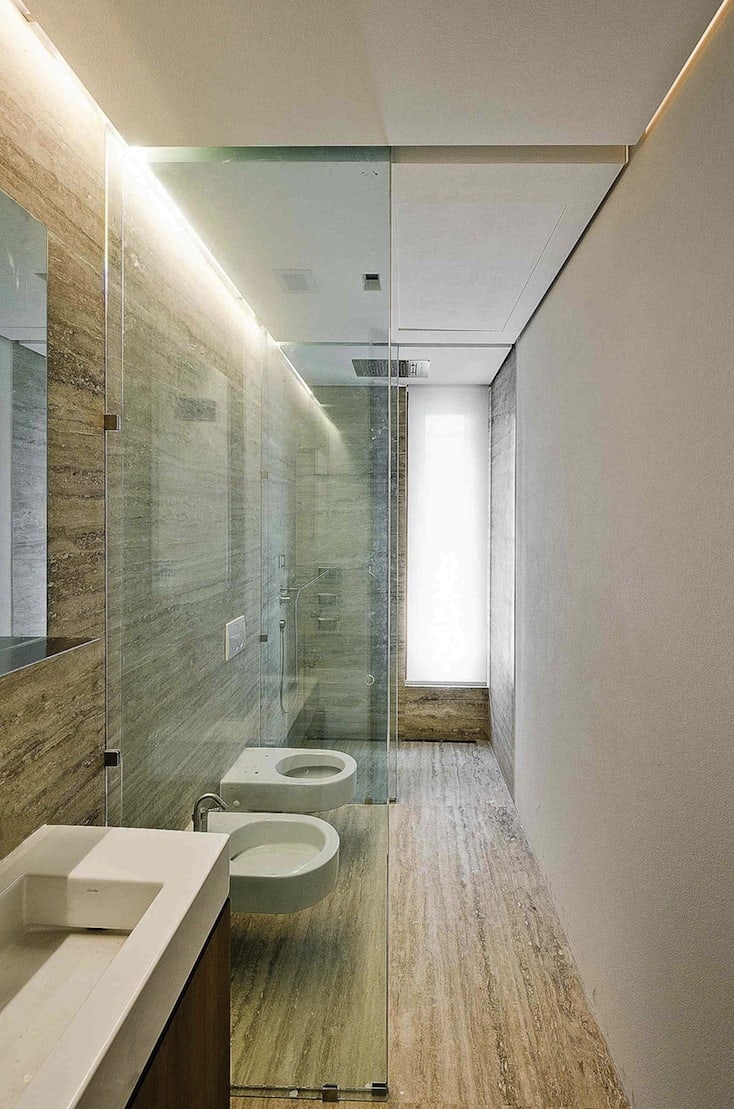
Like the overall house itself, this bathroom is long and thin, broken up into sections by glass partitions.
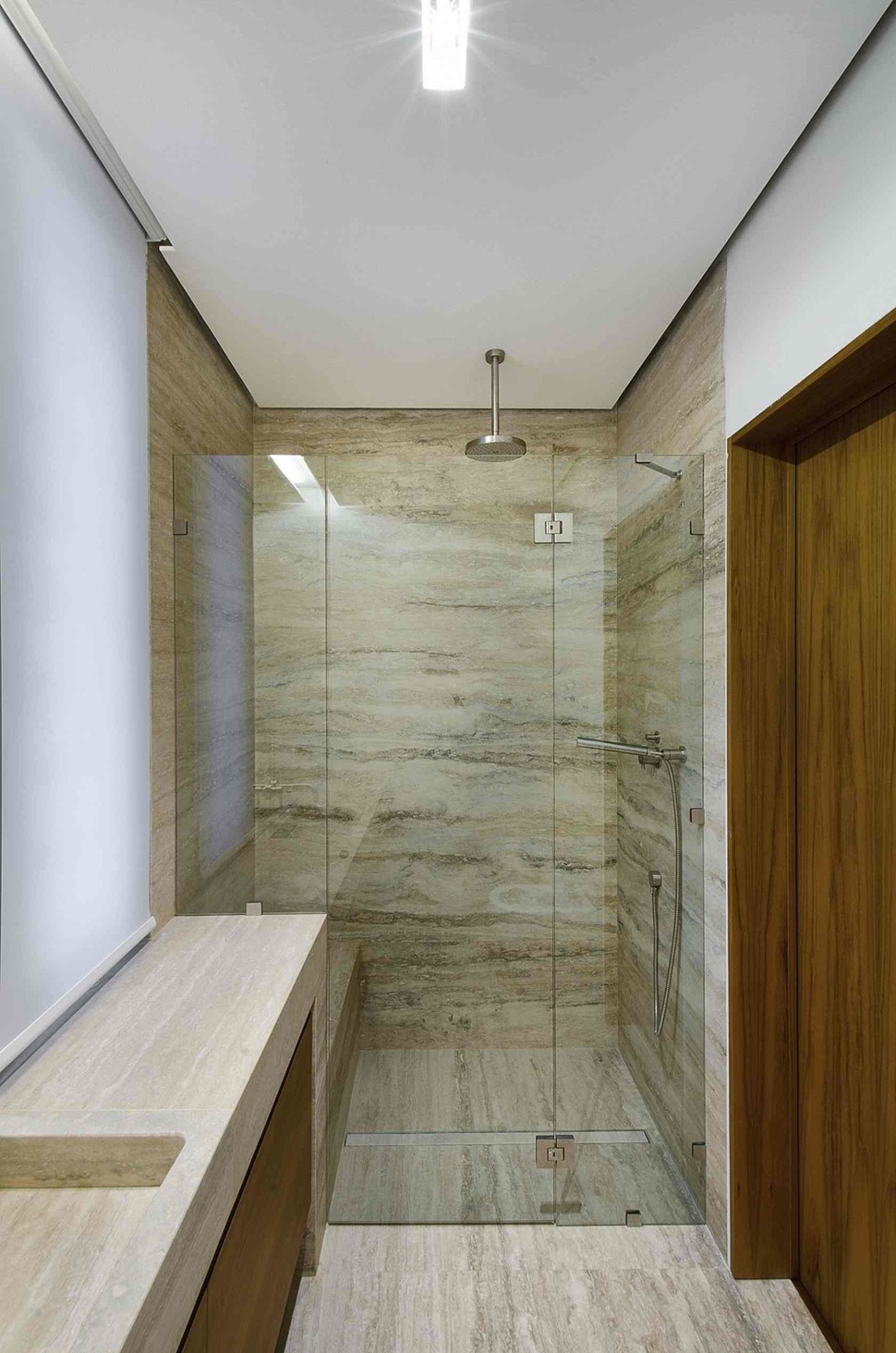
Sundaymorning and Massimo Fiorido Associati






















